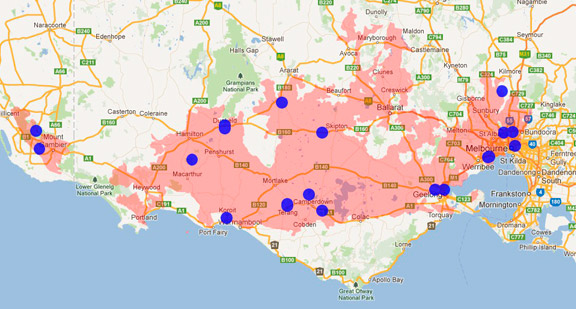A range of teacher professional learning programs will be developed to accompany the Biodiversity of the Western Volcanic Plains online outreach...

Toowoomba Canary-grass
Phalaris aquatica
Perennial. Peak growth occurs in spring and autumn. Prefers fertile, seasonally moist sites. Commonly spreads from pastures, road verges and drainage ditches to adjacent indigenous vegetation. Grows densely and if not grazed or mown, browns off in summer becoming a potential fire hazard.
| Details | Description |
| Type | Graminoid |
| Group | Grass |
| Identifying Characteristics | |
| Distinctive Features | Cylindrical seed heads held at the top of long flower stems. Seeds have no awns (bristles). |
| Life Form Group | Graminoid |
| Life Form Codes | Large Tufted Graminoid (LTG) |
| EVC types | EVC 125: Plains Grassy Wetland EVC 132_61: Heavier-soils Plains Grassland EVC 132_62: Lighter-soils Plains Grassland EVC 649: Stony Knoll Shrubland EVC 68: Creekline Grassy Woodland |
| Native Status | Introduced |
| Weed Status Invasiveness | High INVASIVE |
| Weed Status Impact | High IMPACT |
| Taxonomy | |
| Phylum | Charophyta |
| Class | Equisetopsida |
| Order | Poales |
| Family | Poaceae |
| Genus | Phalaris |
| Species | aquatica |

Distribution maps indicate current and historic locations where species have been sighted.
Source: Atlas of Living Australia
| Endangered Status | |
| DEPI Advisory List | Not listed |
| FFG Act | Not listed |
| EPBC Act | Not listed |
The conservation status of species is listed within Victoria and Australia.
The Department of Environment and Primary Industry (DEPI) Advisory List consists of non-statutory advisory lists of rare or threatened flora and fauna within Victoria.
The Flora and Fauna Guarantee Act 1988 (FFG Act) lists threatened species in Victoria. Under the Act, an Action Statement is produced for each listed species.
The Environment Protection and Biodiversity Conservation Act 1999 (EPBC Act) is the Australian Government’s key piece of environmental legislation, listing nationally threatened native species and ecological communities.



